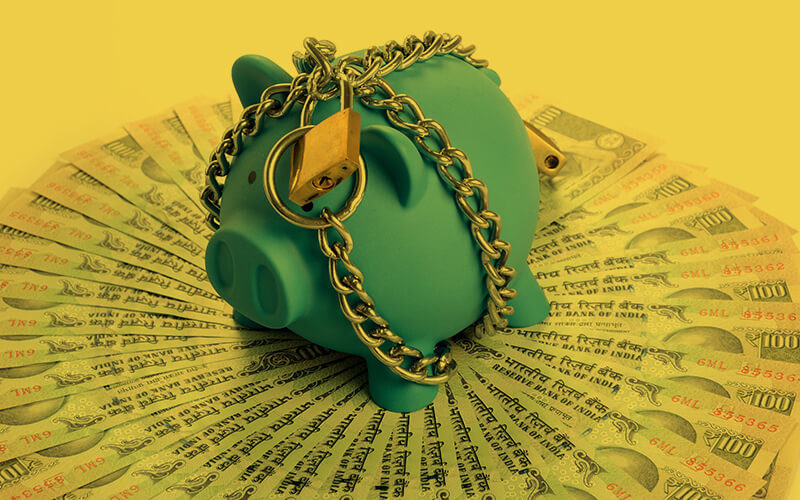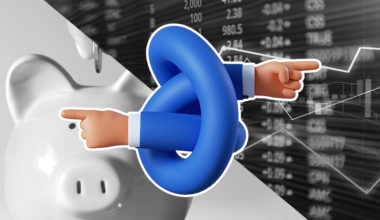Fixed deposits are a popular investment choice offered by banks, providing customers with a range of options to meet their financial objectives and preferences. These deposits come in different types, each with its own set of features, advantages, and considerations. Understanding the various types of fixed deposits and knowing how to select the appropriate one is essential for maximizing returns and achieving financial goals.
In this blog, we will explore the different types of fixed deposits available and guide on selecting the most suitable option based on your specific requirements and circumstances.
What is Fixed Deposit Account?
Fixed deposits, also known as term deposits, are investment instruments offered by banks. They involve depositing a specific amount of money for a predetermined period at a fixed interest rate. The deposited amount remains locked until maturity, and at the end of the term, the depositor receives the initial deposit amount along with the accrued interest. Fixed deposits are considered low-risk investments that provide stable returns.
What Are the Types of Fixed Deposits?
Banks and financial institutions provide various types of fixed deposit options to cater to customers’ investment preferences and financial requirements. Each type of fixed deposit comes with its advantages, limitations, and characteristics. Therefore, customers must assess their individual needs and objectives to select the most suitable option.
The following are the different types of fixed deposits and their definitions:
- Cumulative Fixed Deposit: In this type of fixed deposit, the interest is compounded and reinvested with the principal amount. The interest is paid out along with the principal at the time of maturity. This type of fixed deposit is suitable for individuals who want to accumulate interest and grow their savings over time.
- Non-Cumulative fixed deposit: Unlike cumulative fixed deposits, non-cumulative fixed deposits offer regular interest payouts at specified intervals, such as monthly, quarterly, half-yearly, or annually. This type of fixed deposit is ideal for individuals who require a steady source of income from their investments.
Read More: Cumulative vs Non-Cumulative Fixed Deposits
- Bank deposits: These fixed deposits are offered by banks to their customers with savings accounts. The interest rates on bank deposits are generally lower compared to non-banking financial institutions but they are considered relatively safer.
- Company deposits: Non-Banking Financial Companies (NBFCs) offer company deposits that often provide higher interest rates compared to bank deposits. However, they carry a certain level of risk, as the repayment depends on the financial stability and creditworthiness of the company.
- Senior citizen FD: This type of fixed deposit is specifically designed for senior citizens, typically offering higher interest rates than regular fixed deposits. It provides additional benefits to individuals above a certain age, usually 60 years or older.
- NRI FDs: Non-Resident Indians (NRIs), Overseas Citizens of India (OCIs), and Persons of Indian Origin (PIOs) can avail of NRI fixed deposits. These deposits are held in NRO (Non-Residential Ordinary) accounts and offer attractive interest rates for NRIs.
- Regular FDs: Regular fixed deposits are the most common form of fixed deposits where individuals invest a specific amount for a predetermined period at a fixed interest rate. They are suitable for those who seek a stable and secure investment option with guaranteed returns.
- Tax-saving FDs: These fixed deposits are eligible for tax deductions under specific sections of the Income Tax Act.
- Flexi fixed deposit: Flexi fixed deposits offer the flexibility to link a savings account with a fixed deposit. Any surplus funds in the savings account are automatically transferred to the fixed deposit, providing higher interest earnings. It allows individuals to maintain liquidity while maximizing returns.
- Standard FDs: Standard fixed deposits have a predetermined tenure, usually ranging from a few days to several years. They offer a fixed interest rate throughout the tenure and provide higher interest rates compared to regular savings accounts.
| Type of Fixed Deposit | Explanation |
|---|---|
| Cumulative Fixed Deposit | Interest on the deposit is only paid out at maturity. It is suitable for individuals who do not need regular interest payments and want to accumulate interest over time. |
| Non-Cumulative Fixed Deposit | Interest is paid out at regular intervals, providing a steady source of income. This type is suitable for individuals who require regular interest payments. |
| Bank Deposits | Offered by banks to customers with savings accounts, providing a relatively safe investment option with lower interest rates. |
| Company Deposits | Offered by NBFCs with a higher rate of interest, but carries some risk depending on the financial stability of the company. |
| Senior Citizen FD | Specifically designed for individuals aged 60 and above, offering higher interest rates and additional benefits. |
| NRI FDs | Available for Non-Resident Indians, Overseas Citizens of India, and Persons of Indian Origin with NRO accounts, offering attractive interest rates. |
| Regular FDs | Common type of fixed deposit, providing a fixed interest rate for a predetermined period. Suitable for stable and secure investment with guaranteed returns. |
| Tax Saving FDs | Offer tax deductions under specific sections of the Income Tax Act, with a lock-in period and a maximum limit for tax benefits. |
| Flexi Fixed Deposit | Linked to a savings account, allowing automatic transfer of surplus funds to the fixed deposit for higher interest earnings and maintaining liquidity. |
| Standard FDs | Predetermined tenure with fixed interest rates, providing higher interest rates compared to regular savings accounts. |
How to Find the Right Fixed Deposit?
Finding the right fixed deposit involves considering various factors based on your financial goals, risk tolerance, and personal preferences. Here’s a step-by-step guide to help you find the right fixed deposit:
- Determine your financial goals: Clearly define your financial goals for investing in a fixed deposit. Are you looking for capital preservation, regular income, or long-term growth? Knowing your goals will help you select a fixed deposit that aligns with your objectives.
- Assess your risk tolerance: Fixed deposits are generally considered low-risk investments, but it’s important to assess your risk tolerance. If you are comfortable with a higher risk, you might consider other investment options that offer potentially higher returns.
- Compare interest rates: Research and compare the interest rates offered by different banks and financial institutions. Look for competitive rates that will maximize your returns. Keep in mind that interest rates can vary based on the tenure and type of fixed deposit.
- Consider deposit tenure: Determine the ideal tenure for your fixed deposit. Shorter tenures offer quicker liquidity, while longer tenures may provide higher interest rates. Assess your liquidity needs and investment horizon to choose an appropriate tenure.
- Evaluate deposit terms and conditions: Read and understand the terms and conditions of the fixed deposit, including penalties for premature withdrawals, renewal options, and any additional fees or charges. Ensure that the terms align with your financial needs and preferences.
- Assess the credibility of the institution: Evaluate the credibility and reputation of the bank or financial institution offering the fixed deposit. Check their financial stability, credit ratings, and customer reviews to ensure the safety of your investment.
- Consider additional features: Some fixed deposits offer additional features like premature withdrawal facilities, loan against deposit options, or joint account holders. Consider these features if they align with your requirements.
- Seek professional advice if needed: If you are unsure or need expert guidance, consult a financial advisor or bank representative who can provide personalized advice based on your financial situation and goals.
- Review and monitor your investment: After investing in a fixed deposit, regularly review and monitor your investment. Keep track of the maturity date, interest payments, and any changes in the terms and conditions. This will help you make informed decisions about reinvestment or withdrawal.
Conclusion: Fixed deposits offer a wide range of options for individuals looking to invest their money and achieve their financial goals. By understanding the various types of fixed deposits and considering factors such as financial objectives, risk tolerance, interest rates, deposit tenure, and terms and conditions, individuals can make informed decisions and choose the right fixed deposit that suits their needs.










